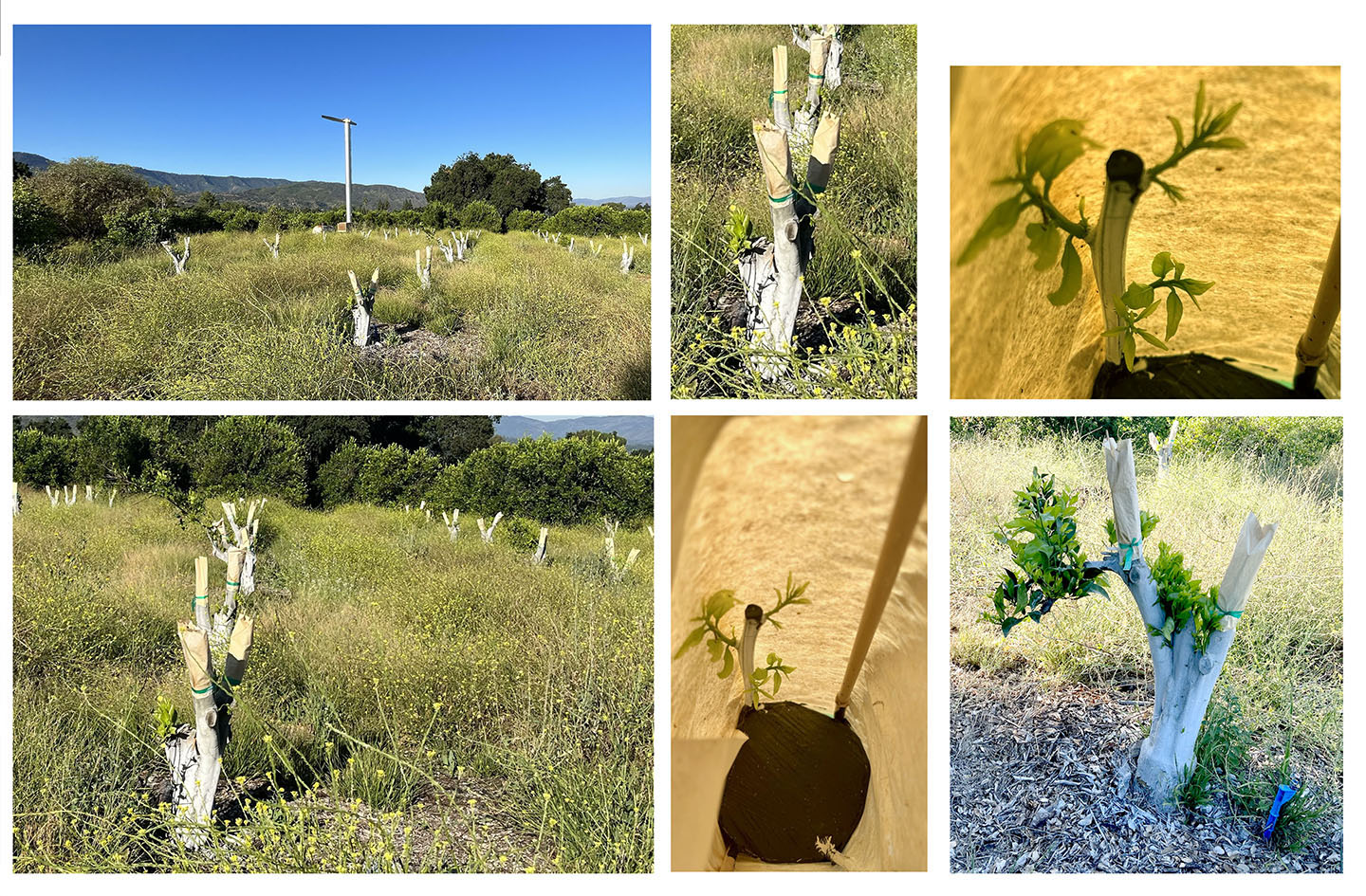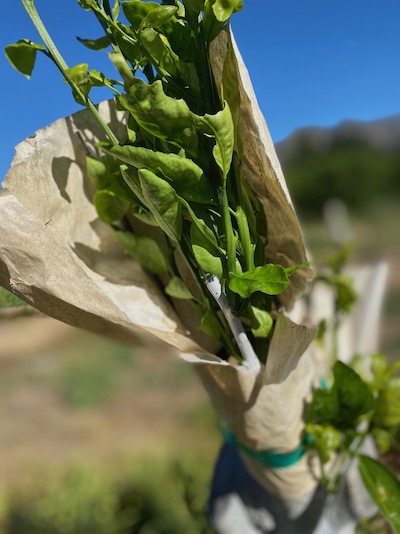We had a block of Pixie trees that turned out to be growing on the wrong rootstock.
Turns out that the wrong rootstock for Pixies is a good rootstock for Kishus.
So we are grafting – or “topworking” – them over to Kishus.
Yes, more Kishu trees.
Grafting? Yes – here’s a brief introduction.
Grafting is an ancient horticultural practice where tissues of two plants are joined so that they grow together as a single plant.
The top part of the grafted plant is called the scion; the lower part is called the rootstock.
The rootstock provides the roots, anchorage, and support for the scion. Rootstock can also provide resistance to pests and diseases, or tolerance to specific environmental conditions.
The scion provides the desired characteristics of the tree, such as fruit variety, flower color, or growth habit.
The bud union is the point where the scion and rootstock are joined.
In a successful graft, the vascular tissues of the two plants grow together.
If the bud union fails, the graft will not be successful.

To topwork our Pixies into Kishus, Sam Garibay, the skilled artisan who does the actual grafting, will “scaffold” or prune the Pixie tree back, leaving only a few branches of 2-3 inch diameter or smaller. He does this some weeks before the actual grafting, and leaves at least one branch to serve as a “nurse limb”, with leaves to keep the water and nutrients flowing up into the parts of the tree what will receive the grafts.
Using a very sharp grafting knife, he then slips 1–3 pieces of Kishu budwood under the bark – so it makes contact with the Pixie cambium layer on the upper side of the remaining scaffold limbs. Paint with sealer, and cover with paper cones to protect the tender buds.
Then wait.

A few months later, we have 40 takes out of 53 trees grafted. That’s with Sam coming back to regraft two times. Some of the little sprouts are so wee and tiny that they might not make it.
If the topworking is successful, we’ve switched the tree to produce a different variety of citrus. The mature root system can push a lot of energy into those new branches, so we could be seeing more Kishus in a couple more years. It’s not an instant makeover, but puts these trees back in production in 3-4 years.
